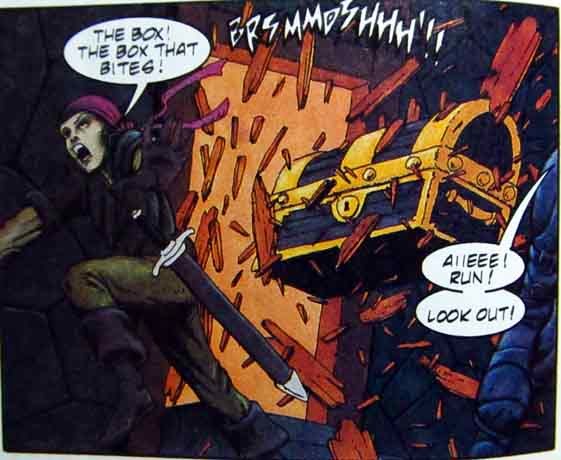 |
| The beautiful Jane Foster in "Thor: The Dark World", courtesy of artassylum.com |
In the recent movies, Thor loves the human woman Jane Foster, much to his father Odin's displeasure. In Jason Aaron's new comic series, a mysterious woman has taken over Thor's mantle. At first, he thought she had bewitched him, and attempted to wrest Mjolnir back from her. But when she exhibits an impressive mastery over his former hammer, he decides Mjolnir has truly rejected him and consigns its ownership to his past. In fact, he's so impressed by the manner in which she wields the hammer that he gives her his name. Henceforth, she has the right to be called Thor, and he shall be known solely as Odinson.
Still, he wishes to know her true identity.
As Lady Thor wears a mask, Odinson begins a quest to discover her identity. In doing so, he emulates another mythological character who wears red: that great figure of charity, joviality, and an acknowledged master of elves. Santa Claus! (Okay, perhaps he's not so jolly, and his belly doesn't shake like jelly, but go with me on this). And just like Santa, he makes a list, and he checks it, well, perhaps just once, at least for now. After all, it shouldn't take too much work to figure out who Mjolnir thinks isn't naughty, but is really nice. Right?
Part of the fun of reading the new THOR series is guessing the identity of the woman behind the mask. As a newbie to Thor comics, I don't know half of the women in Odinson's past. But I had a suspicion. Jason Aaron takes some of his cues from the recent movies, using movie villains like the Frost Giants and the Dark Elf Malekith in his stories. Behind her mask, might this new Thor be his lady love, Jane Foster?
THOR issue 6 seems to slap down my hopes in the most comprehensive manner possible. Odinson visits Jane Foster in a room in Asgard. She is attended by healers, as she suffers from a very human disease: breast cancer. Despite the healers' ability to banish it, Jane Foster refuses any magical treatment, vowing to beat her disease with human technology and willpower, or die in the attempt. As Odinson stands beside her sickbed, Jane asserts that he is more than his hammer. He is still a good man, a worthy man, a valiant hero. Even if Mjolnir has rejected him, he should not give up his name to anyone.
In fact, if he doesn't reclaim his name soon, she threatens to him another: Lord Thunderbritches.
With a heavy heart, Odinson consigns her to the healers' care. Then he crosses her name off the list. In her present condition, for Jane Foster to wield Mjolnir seems impossible. Thus, Jason Aaron shows up my guess of Lady Thor's identity as ridiculous and ignorant. It's just as well that guessing about Lady Thor's identity is only part of the fun of reading this new series. Actually, it's hard to feel even a little disappointed. You see, I'm enjoying the journey, and in no hurry to reach the destination.
Dragon Dave
Related Internet Links
Art Assylum's picture of Jane Foster & Thor

















































